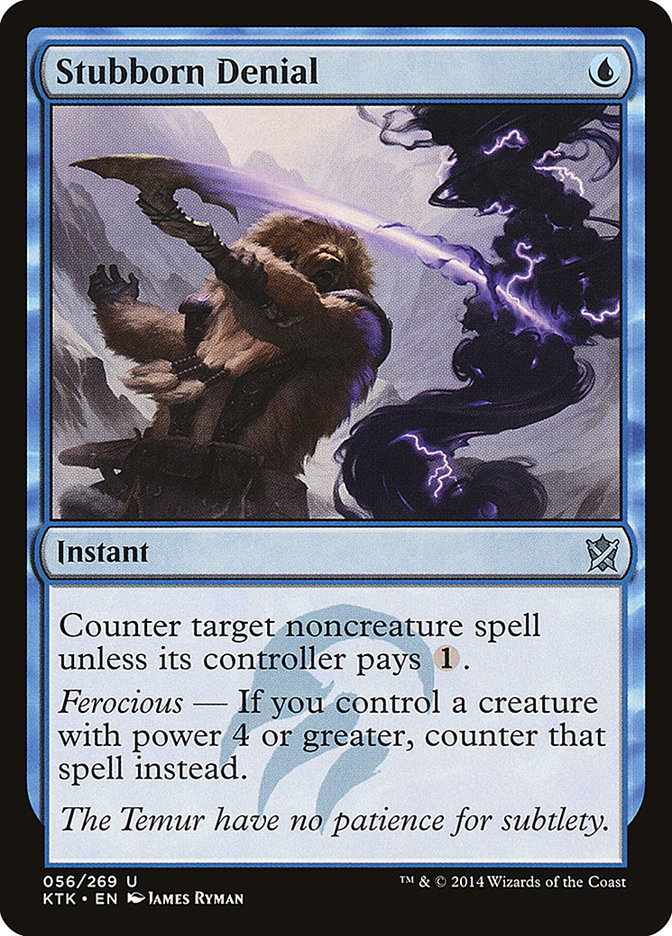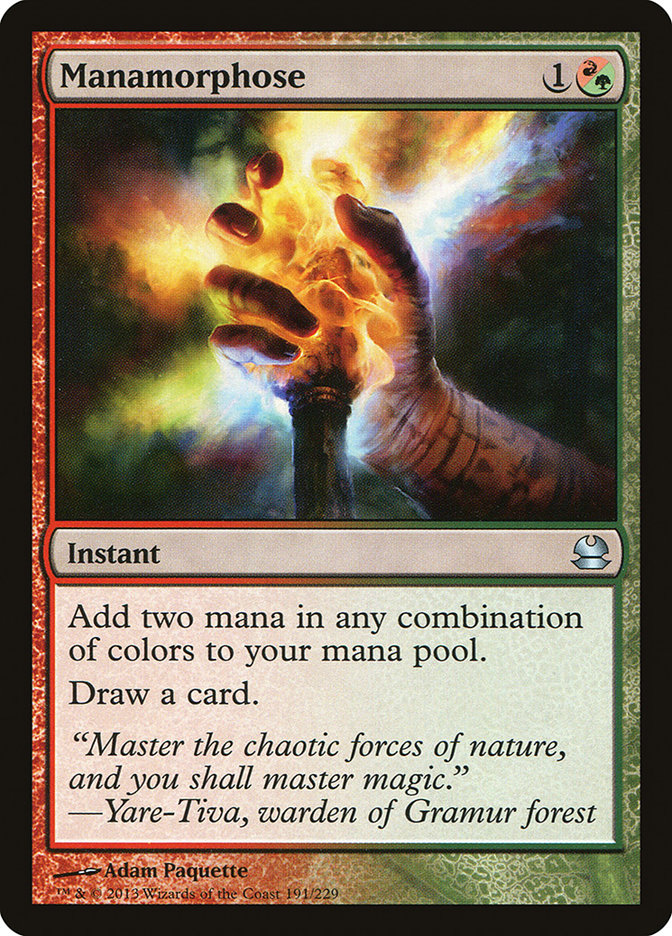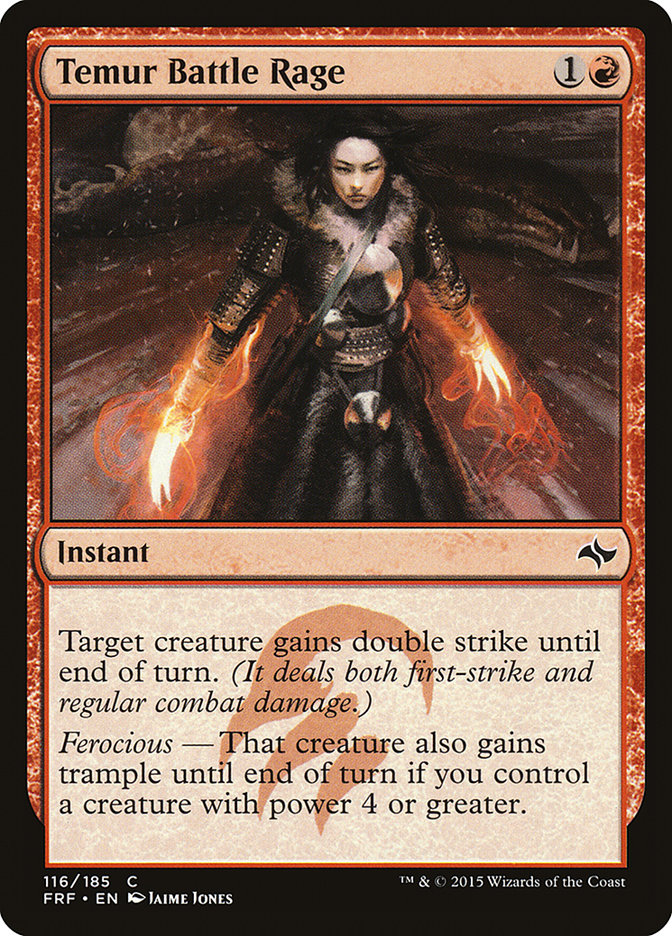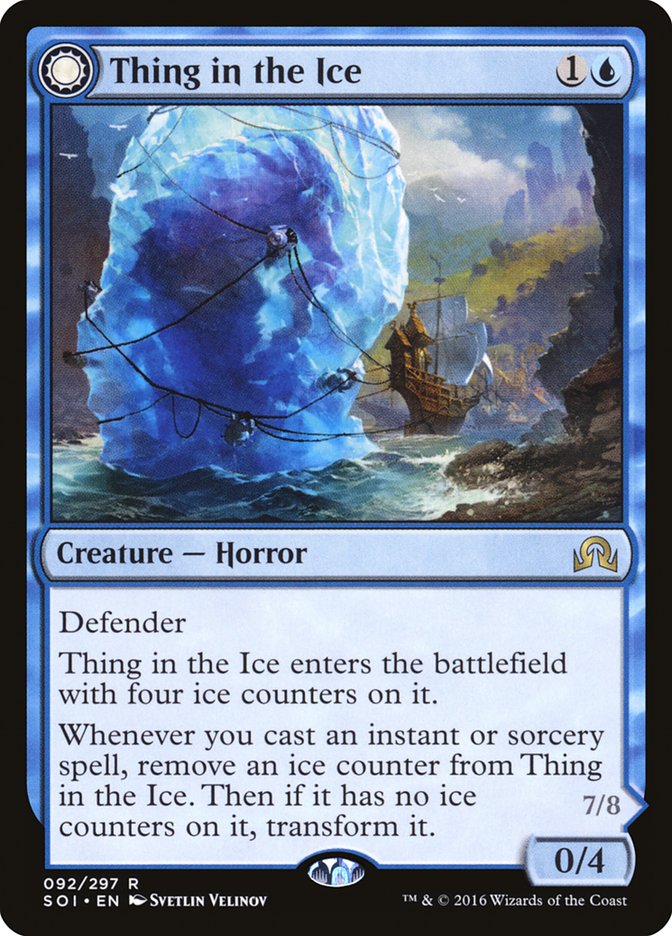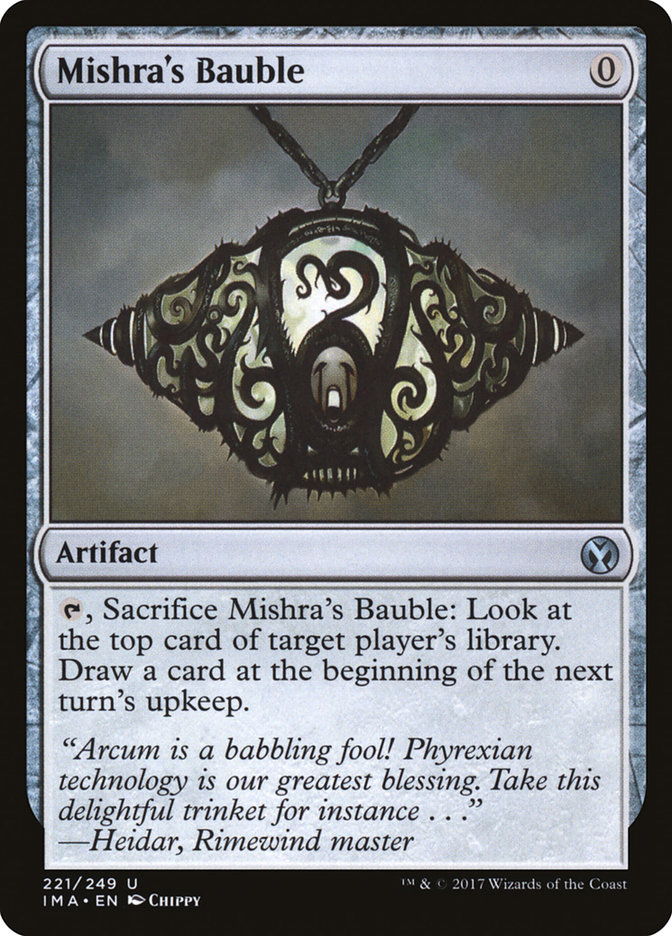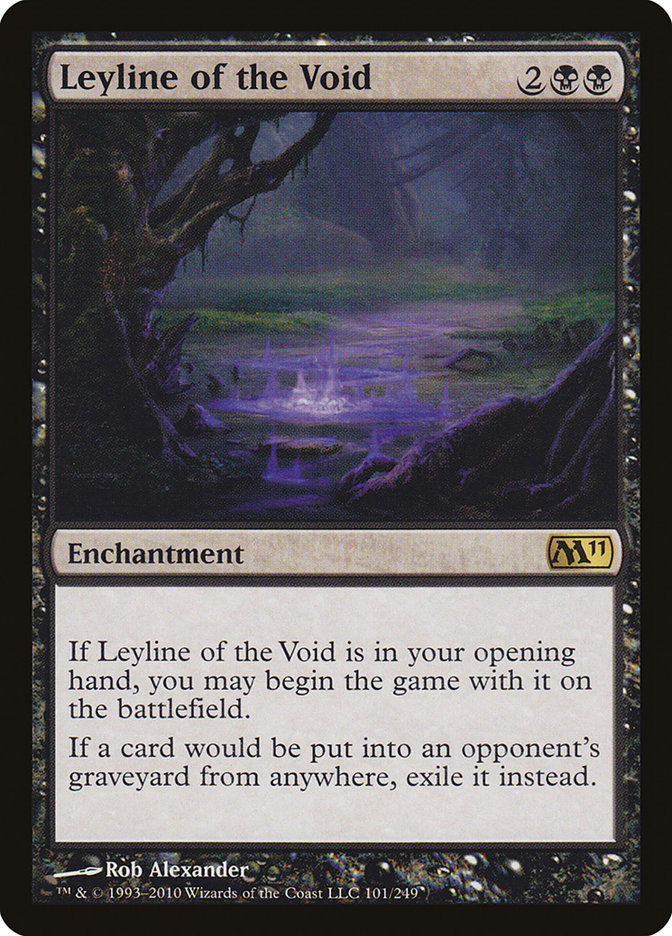the only thing that stops a bad guy with a Faithless Looting is a good guy with a Faithless Looting
— Ben Friedman (@40cardfriedman) March 18, 2019
It seems like the court of public opinion is turning decisively against Faithless Looting, at least as far as social media sentiment seems to indicate. Ancient Stirrings and Mox Opal fans are probably breathing a huge sigh of relief to be of secondary focus when it comes to Modern banned list ire, despite those cards being of equal or higher power level relative to the rest of the format.
But then, Tron, Hardened Scales, and Whir Prison weren’t 20% of the field in Day 2 of both Grand Prix events and the Modern Open at SCG Philadelphia this weekend. It was Faithless Looting that won everything. It’s Looting, not Urza’s Tower, that finds itself the target of snarky memes and dismissive commentary on the best platform for Magic players to get their opinions across to Wizards of the Coast, Twitter. As such, it is most likely Faithless Looting’s name that we will see at the top of the next banned and restricted announcement, for better or for worse.
Meanwhile, Hollow One did nothing wrong, but if Looting goes, so too will go the Hollow Bois. It would be an unfortunate end for an archetype that started out as a meme deck and went on to be one of Modern’s top decks for a time. Hollow One dying for sins Dredge and Izzet Phoenix committed would be a fitting though inglorious end for the archetype.
Of course, there are those pro-Stoneforge Mystic pundits who want to increase Modern’s power level and want to see if the Kor Artificer can juice up control and midrange to compete with Dredge and Izzet Phoenix. I wouldn’t hate that plan, to be honest. Gregory Orange went 12-3 in the Grand Prix with Azorius Control, and the format might be in a slower and healthier place with Stoneforge providing more incentive for players to fight fair, compared with the current shootout between unfair Looting archetypes.
But even as it stands, Izzet Phoenix isn’t the unbeatable juggernaut that some would have you believe. In fact, the archetype that won Grand Prix Tampa wasn’t even Izzet Phoenix, it was the ever-reliable Grixis Death’s Shadow. Roshen Eapen won with a list straight out of the Shadow Realm, my name for the Twitter club of Grixis aficionados, including Brandon Dollaway, Ben Jones, and a number of other folks who provide incessant commentary on updated lists, sideboard guides, and different pieces of tech old and new.
Creatures (14)
Lands (17)
Spells (29)

It’s weird. Izzet Phoenix is the deck that everyone hates right now, but this Grand Prix, as well as two or three other recent Modern Grand Prix, were all won by Grixis Death’s Shadow. The data from a large sample size of Grand Prix matches showed a 65% win rate for Izzet in the matchup against Shadow, but that data doesn’t take into account the expertise of either player.
I’ll be the first to say that Grixis Death’s Shadow has more opportunities to throw away a game, and Izzet Phoenix will bail you out of most situations by virtue of being an incredibly powerful and consistent deck. If you’ve been playing a weaker archetype in Modern for years and are looking for a deck to pick up, there’s no question that it should be Izzet Phoenix.
But I won’t stand for the propagation of misinformation or incomplete information, and often metagame statistics offer both. Grixis Death’s Shadow, when piloted by an expert, can go toe-to-toe with Izzet Phoenix. Careful management of every resource is paramount, and often Death’s Shadow needs to string together a delicate sequence to sneak through the win in the mid-game, but there’s no reason to fear when you sit down on either side of the matchup. Both decks are incredible, and I would not fault anyone for playing either of them in the middle seat for the Cincinnati Open this weekend.
So, how do we play this matchup? How do we sideboard? Are there any weird tips or tricks you should be looking to use to get ahead? Oh, yeah.
Draw First
The first time I saw this advice was from the other side. Daniel Fournier, in his article on Izzet Phoenix, advocated for drawing first in the Death’s Shadow matchup. He cited the fact that with so much one-for-one trading going on between discard, Stubborn Denial, and Fatal Push for Thing in the Ice, the tempo loss of going second was worth the extra card. Death’s Shadow plays multiple tempo-negative discard spells and cantrips and often doesn’t need to jam threats on the battlefield in the hope of overwhelming an opponent before they have enough mana to answer everything. Death’s Shadow is not Humans.
At the same time, Izzet Phoenix plays multiple card-negative spells, including the necessary Lightning Axe and the aforementioned Faithless Looting. Some builds (not mine for this event, but some) of Grixis Death’s Shadow also run Faithless Looting. Post-sideboard, Death’s Shadow gains graveyard hate like Surgical Extraction or Leyline of the Void to shut off the Phoenix nut draws, meaning that both decks have more and more reason to need the extra card in a longer game.
We’re conditioned to be skeptical of advice that goes against conventional wisdom, but then Roshen won the GP choosing to draw first against Izzet Phoenix. I agree with Fournier’s analysis from the Izzet Phoenix side, which means that the Death’s Shadow player should also choose to draw. This, in addition to the mirror match and Golgari Midrange, means we’re choosing to draw first against a rather large swath of the Modern metagame. Crazy!
Stubborn Denial the Manamorphose
You should, generally speaking, prioritize your Stubborn Denials to deny your opponent as much mana as possible. I will always use a Force Spike-mode Stubborn Denial on a Turn 2 Manamorphose if I can. I’ll rarely use it on a Faithless Looting, unless you have knowledge of stuck Arclight Phoenixes in hand that you can strand there. Of course, you can and should Stubborn Denial a Lightning Axe, but generally stopping the “free” spell ends up turning into a Time Walk or better.
On the draw, if I have a Fatal Push / Dismember, a Thought Scour, a Stubborn Denial, and a Thoughtseize / Inquisition of Kozilek, I will generally hold up my mana on Turn 1 in order to potentially spike a Manamorphose (or remove a Thing in the Ice or cast Thought Scour if the opponent doesn’t play either of those cards). I prioritize this over the Turn 1 discard spell, which is a habit that takes significant unlearning for most Magic players. Just like previous advice about stopping Tron’s Turn 2 Sylvan Scrying by saving the discard spell for later, the “hold the Thoughtseize” play pattern comes up again here.
Surgical Extraction in Response to Looting
This one is a bit narrow, but it comes up. If you choose to play Surgical Extraction over Leyline of the Void, there may come a time when your opponent has an Arclight Phoenix in their graveyard (perhaps from a lucky Thought Scour) and a Faithless Looting on the stack. There’s a nonzero chance that your opponent has another Arclight Phoenix in their hand that they’d like to throw away for the coveted double-Phoenix draw. You have a Surgical Extraction in your hand, so you aren’t concerned. You confidently allow their Looting to resolve, excited to get those pesky firebirds out of the game with your powerful hate card.
You should cast your Surgical Extraction in response to the Faithless Looting. Deny your opponent the Phoenix in their hand and the one in the graveyard, rather than waiting to hit both Phoenixes after they hit the bin. This is rudimentary card parity-seeking behavior, which is something we should be looking to do with our Surgical Extractions whenever possible.
You gain very little from waiting to “trap” your opponent, as their discard choices are usually very, very simple. They’ll discard the Phoenix and a land or weak Lightning Bolt. But if you get that Phoenix out of their hand in response to the Looting, suddenly they must discard a “real” card and you’ve successfully gotten that card out of their hand for free.
This is discounting the blowout games where your opponent has two Arclight Phoenixes in hand, and you two-for-one them in response to their zero-for-one Looting, resulting in a complete rout. What was going to be a card advantageous Looting, gaining three 3/2 creatures and two fresh cards, turns into an incinerated hand and a lost game.
Seven Is Your Lucky Number
At six life, you can die to a Lightning Bolt and Arclight Phoenix. At eight life, your Death’s Shadow can be hit with Lightning Axe. Seven is the best life total in the matchup, until and unless you’re ready to fire off a Temur Battle Rage and give your opponent a Tiger Uppercut.
I love to slow-roll my life loss when I don’t have a Death’s Shadow or two at the ready, and this matchup is no exception. Use those Dismembers to manage your life total well and get it right into the ideal zone to put opponents in positions where they don’t know whether they can attack you or not. If you have a Death’s Shadow and seven life, can an opponent with two Arclight Phoenixes attack you to one? Can they attack you to four? If you have Stubborn Denial and Temur Battle Rage, how does that change things? If they lead with a Lightning Bolt and you allow it, should they hit you with both Phoenixes? What if you have a three-mana Dismember and a Temur Battle Rage?
If you know your opponent doesn’t have a Lightning Axe, then anything from seven to nine life is sufficient, but cautious life total management is absolutely critical here.
Thing in the Ice
On Turn 2, it makes a lot of sense to just kill a Thing in the Ice on sight. But we need to question these “obvious” plays and figure out when this paradigm doesn’t hold up.
First, if you have a Dismember and your opponent has a rich hand of cards, it makes sense to just run out the removal spell as fast as possible. You can wait until your opponent casts a spell or two and respond to the removal of the third counter with the Dismember, but you run the risk of getting hit with a Dispel (which they should probably bring in). If you have a Fatal Push, though, things get a bit more interesting. And if it’s the mid-game and you have a Snapcaster Mage, things get even more interesting.
I live for the moments I get to flash in a Snapcaster Mage, give Fatal Push Flashback, return Snapcaster off the Awoken Horror trigger, and then calmly remove the offending 7/8 for no cards at all. This is definitely doable with a second, mid-game Thing in the Ice, though you won’t get this opportunity on Turn 2. Be careful of Dispel, but you can often eke out a bit of value here.
If it’s Game 1 and you’d like to hold up Stubborn Denial and Thought Scour for the “Manamorphose Protection Team” play pattern, you don’t have to run out a Fatal Push just because you can cast it. Sometimes an opponent will let you Time Walk them before you cast that Push!
Sideboarding
Here’s the list I chose to play at the Grand Prix Tampa to a smooth sixteenth-place finish.
Creatures (17)
Lands (17)
Spells (26)

Notice my love of Jace, Vryn’s Prodigy over Faithless Looting. The one card in the “meme slot” that could be Izzet Charm, Rise // Fall, or the Claim // Fame I ended up playing. Hell, it could be the fourth Stubborn Denial; a Kolaghan’s Command; a Liliana, the Last Hope; the fourth Snapcaster Mage; or a Sleight of Hand, Opt, or Serum Visions.
Notice also that I won’t stand for cutting a Mishra’s Bauble because zero-mana Opt is broken. It allows you to run out a Turn 2 Gurmag Angler more consistently. I don’t understand the desire to play three copies because it’s a poor topdeck. It still cycles, it still lets you see your opponent’s next card, and it still costs nothing. It’s obviously not great when you absolutely need a threat or a Temur Battle Rage that very turn, but the benefits far outweigh the drawbacks.
Notice also my choice to play four sideboard Leyline of the Void. My rationale was that the three best decks all fold to it: Grixis Death’s Shadow, Izzet Phoenix, and Dredge. Surgical Extraction isn’t good in the Shadow mirror, and one copy is just not enough to realistically beat Dredge. You need two copies, preferably three to seal the deal. You must answer their Bloodghasts, their Narcomoebas, their Creeping Chills, and potentially Conflagrates. Often, you are incentivized to knock off their Stinkweed Imps to dramatically slow down their dredging, but that just buys time, and sometimes not much of it.
I went with Leyline of the Void, but to be honest, Surgical Extraction is a bit better against Izzet Phoenix. Leyline of the Void lets an opponent know from the get-go that they will want to hard-cast their Arclight Phoenixes, which is a very reasonable way for them to win against our fragile life total. Ravenous Trap is also a wonderful choice, as I mentioned last week. You will sideboard in any and all of these graveyard hate spells or Nihil Spellbomb should you choose that particular piece of hate.
You’ll also sideboard in your fourth Stubborn Denial if it’s in your sideboard, but obviously many lists have it in their maindeck. Cut your Street Wraiths. You can’t afford to draw them in the mid-game when your life total is already precarious.
Aside: People act like Mishra’s Bauble is a bad mid-game topdeck, but sometimes Street Wraith is literally unusable. What gives?
Other than that, Kolaghan’s Command is adequate, especially since opponents will bring in Beacon Bolt. You can sideboard it in if you choose, as it’s excellent when games get grindy. It’s not particularly complicated sideboarding, to be frank. You can shave a Thought Scour, and Faithless Looting if you choose to play it, and (of course) the embarrassing Lightning Bolt. Try to cut off their Phoenixes with Surgical Extraction or Leyline of the Void, their Thing in the Ice with Fatal Push, and their Crackling Drakes with Dismember or a revolt-enabled Fatal Push.
Aside: Mishra’s Bauble can be cracked during an opponent’s upkeep to enable revolt that turn. Try that with Street Wraith!
Izzet Phoenix is the best deck in Modern. Somehow, despite the existence of predatory archetypes like Whir Prison, Dredge, and Tron, it keeps putting up record numbers. But it’s not the only archetype you can play to success these days. Azorius Control, Humans, Amulet Titan, and “Ol’ Reliable” Grixis Death’s Shadow are all solid choices. Izzet Phoenix is dominant, but not unbeatable by any means. You simply must learn new play patterns and unlearn old ones, embrace different sideboard cards and prioritize different interaction points. Grixis Death’s Shadow is always able to adapt, and savvy players will find ways to win against even the current king of Modern.
Of course, if that fails, we can always resort to memes and clamor for an emergency banning. Agitating the public on Twitter is always a good time!



